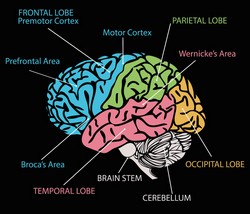Insight into the motor cortex
Direct electrical stimulation of the motor cortex is sufficient to trigger movement. However, the mechanisms by which neurons in this region of the brain cortex intrinsically encode motor output remain unresolved. The firing of individual cortical neurons during cognitive and motor tasks is sparse with only a small percentage of neurons becoming activated. This indicates that precise temporal synchronisation of this activity may be critical for efficient cortical communication. The importance of brain rhythms is emphasised in multiple brain disorders associated with rhythm disturbance. This includes the loss of voluntary movement in Parkinson's disease, the acceleration of high-frequency oscillations in motor seizures, as well as the breakdown of sleep-related oscillations in Alzheimer's disease. The primary objective of the EU-funded M1SYNC (Circuit mechanisms underlying dynamic spike time synchronization in mouse motor cortex) project was to determine the mechanisms underlying network oscillations in the mouse motor cortex. To be able to interpret sensory evidence, researchers undertook analysis of a combination of both sensory and motor information. In this context, they employed state-of-the-art methodologies for cell type-specific channelrhodopsin receptor expression, multi-electrode array recordings and whole-cell patch-clamp techniques. Experiments in acute brain slices in vitro and anesthetised mice in vivo showed that the motor cortex modulated whisker-evoked responses via projections from different cortical layers to the sensory thalamus. Overall, the results of the M1SYNC project provided fundamental knowledge on the mechanisms and functions of motor cortex oscillations. The outcome is of great clinical importance and could be used to understand cases of motor dysfunction.







